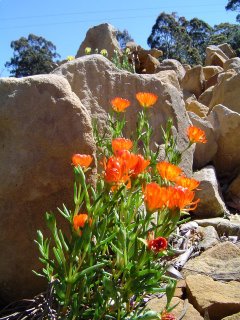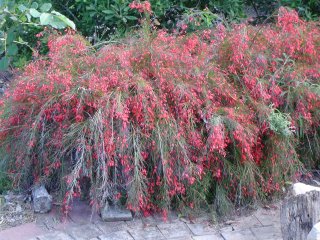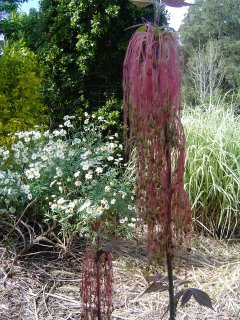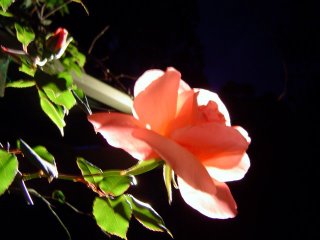
Pigface (
Mesembryanthemum)are fantastic plants which survive just about whatever the weather throws at them. They grow easily from little pieces and flamboyantly flaunt themselves very early in spring.
In my garden at the moment I have patches of orange here and there, contrasting beautifully with white blossoms of all sorts. Mostly double flowering peaches (
Prunus), May bushes (
Spirea) and
Magnolia Stellata but also the native Clematis (
Clematis aristata) and Wonga Wonga vine, (
Pandorea pandorana). Patches of purple pop up here and there as the violets (Viola family) finish off, together with the purply blue of
Tritelias together with Johnny Jump Ups, also known as Heartsease.
The combination of Tritelias with Heartsease is stunning by the way. I always make notes (mostly mentally) I'm not really organised enough to walk around with pencil and paper, though I should be. And my mental note says to plant lots and lots of the above combination underneath all the deciduous trees because I will be well rewarded. Must spread more orange about too.
The list of jobs to do is so long!

 These are the flowers of the Turpentine, a lovely tree which is absolutely smothered in flowers right now. You can see why they used to belong to the "gum tree" family with those flowers.
These are the flowers of the Turpentine, a lovely tree which is absolutely smothered in flowers right now. You can see why they used to belong to the "gum tree" family with those flowers.












